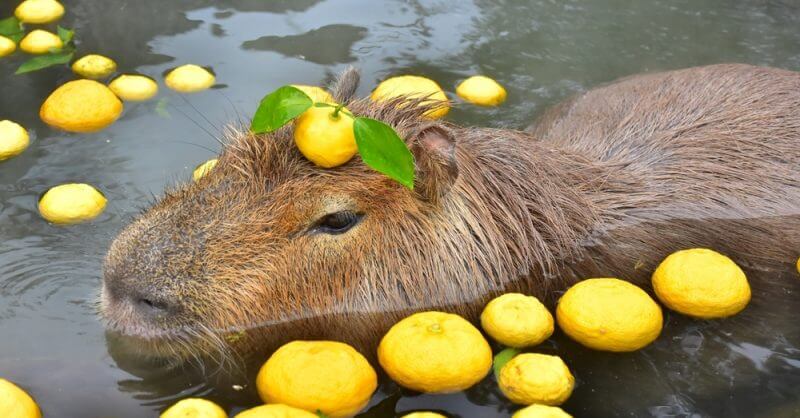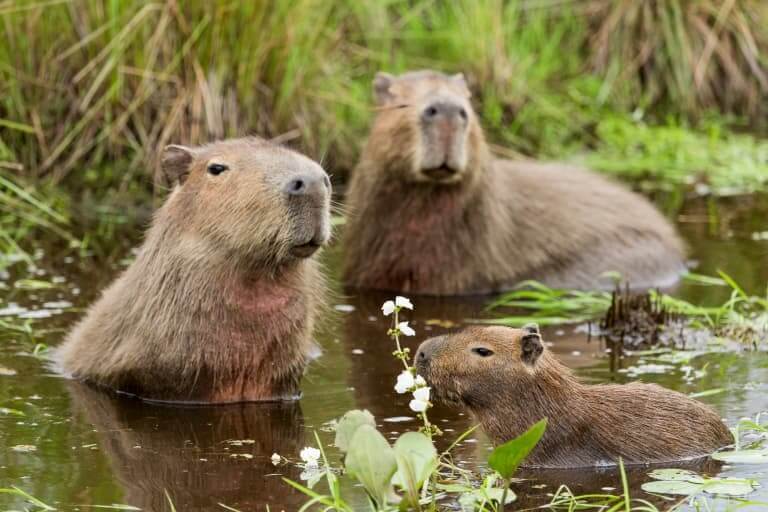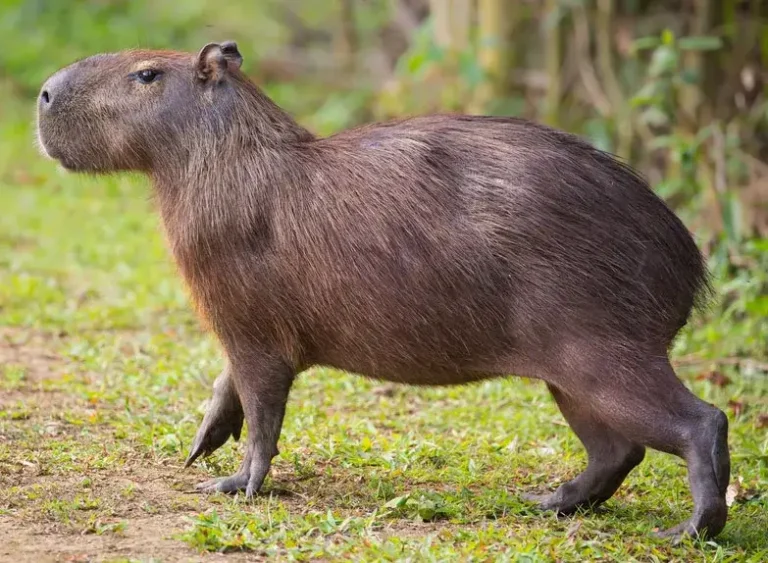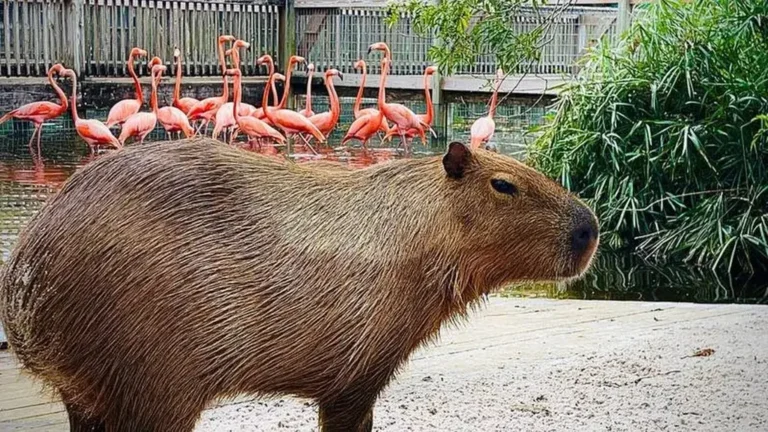Top 20 Capybara Facts: Discover the World’s Largest Rodent
Capybaras are fascinating creatures that capture the interest of animal lovers and scientists alike. Here are the top 20 most interesting facts about these remarkable rodents, compiled from various reputable sources to provide you with the most engaging and accurate information.
Contents
- 1 1. Largest Rodent in the World
- 2 2. Semi-Aquatic Lifestyle
- 3 3. Social Animals
- 4 4. Diet
- 5 5. Teeth Adaptation
- 6 6. Native Habitat
- 7 7. Lifespan
- 8 8. Communication
- 9 9. Breeding
- 10 10. Unique Mating Behavior
- 11 11. Thermoregulation
- 12 12. Role in Ecosystem
- 13 13. Swimming Ability
- 14 14. Grooming and Bonding
- 15 15. Territorial Marking
- 16 16. Dietary Coprophagy
- 17 17. Adaptability
- 18 18. Popular in Zoos and Sanctuaries
- 19 19. Conservation Status
- 20 20. Cultural Significance
1. Largest Rodent in the World
Capybaras hold the title for the largest rodent, standing about 50 cm (20 inches) tall at the shoulders and weighing up to 70 kg (154 lbs).
2. Semi-Aquatic Lifestyle
Capybaras are excellent swimmers and spend a significant amount of time in the water. Their eyes, ears, and nostrils are positioned on top of their heads, allowing them to see and breathe while most of their body is submerged.
3. Social Animals
These rodents are highly social and live in groups that can range from 10 to 20 individuals. During the dry season, these groups can merge to form even larger communities of up to 100 capybaras.
4. Diet
Capybaras are herbivores that primarily feed on grasses and aquatic plants. They have a unique digestive system that allows them to extract maximum nutrients from their fibrous diet.
5. Teeth Adaptation
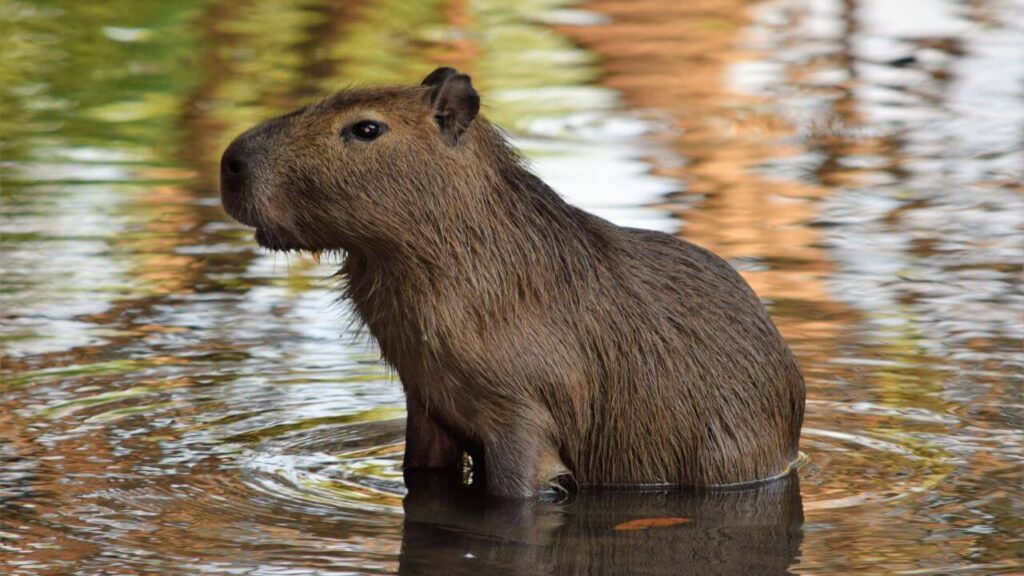
Similar to other rodents, capybaras’ front teeth grow continuously. They must gnaw on hard vegetation to keep their teeth from becoming too long.
6. Native Habitat
Capybaras are native to South America and found in countries such as Brazil, Argentina, Venezuela, and Colombia. They prefer dense vegetation and water bodies like rivers, lakes, and marshes.
7. Lifespan
In the wild, capybaras have a lifespan of about 8 to 10 years. However, in captivity, they can live up to 12 years due to the absence of predators and access to medical care.
8. Communication
Capybaras are vocal animals and use a range of sounds to communicate, including barks, whistles, and purrs. These sounds help them maintain group cohesion and warn each other of potential dangers.
9. Breeding
Capybaras have a gestation period of about 130 to 150 days, and females typically give birth to a litter of four to five young, although larger litters can occur.
10. Unique Mating Behavior
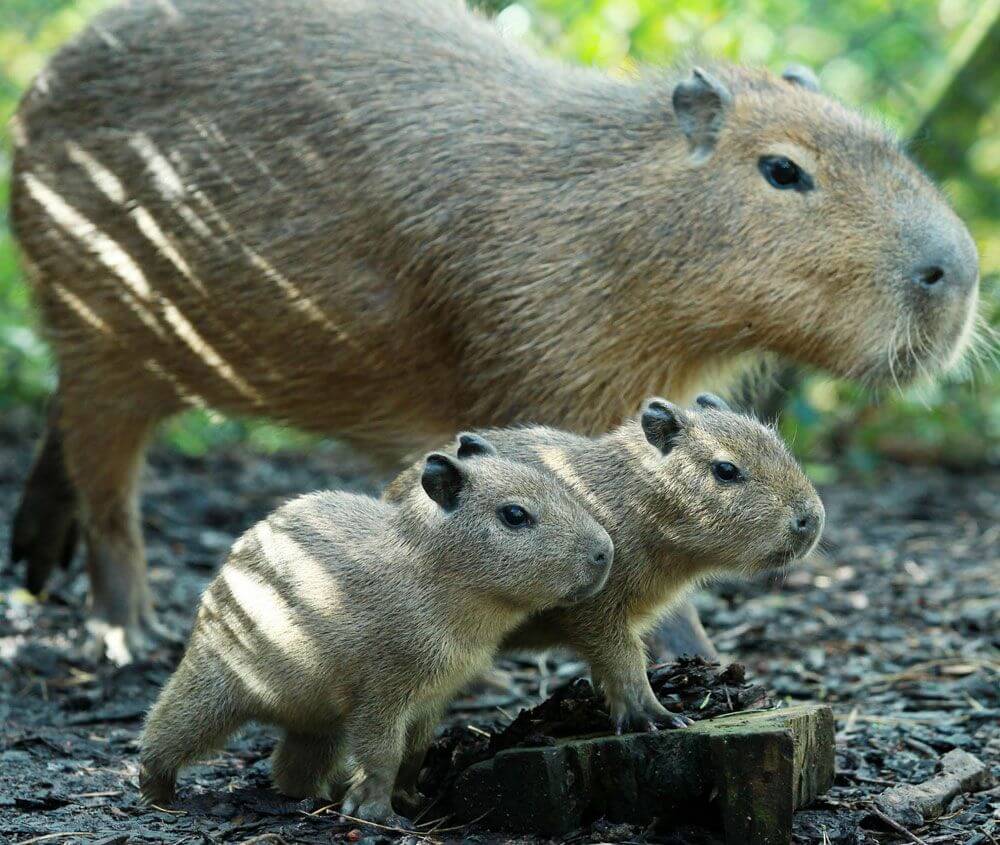
During the breeding season, males will mate with multiple females. Capybara groups usually have a dominant male that controls mating access to the females.
Related: The Sociable Side Of Capybaras
11. Thermoregulation
Capybaras use water to regulate their body temperature, especially in the hot climates of South America. They will often submerge in water to cool off during the heat of the day.
12. Role in Ecosystem
Capybaras play a crucial role in their ecosystem by grazing on grasses, which helps to maintain the balance of plant life in their habitats. They are also a food source for predators like jaguars, anacondas, and caimans.
13. Swimming Ability
Capybaras can stay underwater for up to five minutes, which helps them evade predators. Their partially webbed feet make them efficient swimmers).
Related: Are Capybaras Friendly Or Dangerous?
14. Grooming and Bonding
These rodents engage in mutual grooming, which helps to strengthen social bonds within the group. Grooming also helps them keep their fur clean and free from parasites.
15. Territorial Marking
Capybaras have scent glands on their noses and are known to mark their territory by rubbing these glands on plants and other objects.
16. Dietary Coprophagy
Capybaras eat their feces to digest the food a second time and extract additional nutrients. This behavior is known as coprophagy and is common among herbivores with highly fibrous diets.
17. Adaptability
Capybaras are highly adaptable animals that can live in a variety of environments as long as there is a reliable source of water nearby.
18. Popular in Zoos and Sanctuaries
Due to their calm demeanor and social nature, capybaras are popular attractions in zoos and wildlife sanctuaries around the world. They are often part of interactive exhibits where visitors can learn more about the.
19. Conservation Status
Capybaras are currently not considered endangered. Their populations are stable across their range, although habitat destruction and hunting for their meat and hide can pose localized threats.
20. Cultural Significance
In some South American cultures, capybaras are hunted for their meat, which is considered a delicacy. In other regions, they are kept as pets and are known for their gentle and friendly nature.
- Golden Retriever Pros and Cons: What Every Pet Parent Should Know - 15 September 2025
- Cane Corso Dog Breed: Health, Care, and Lifespan - 14 September 2025
- Catahoula Leopard Dogs: Description, Temperament, Lifespan, & Facts - 21 July 2025

